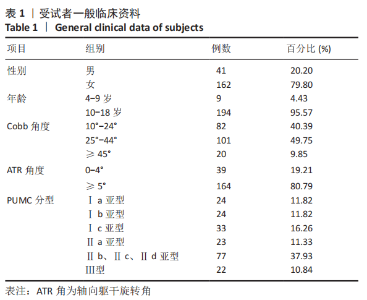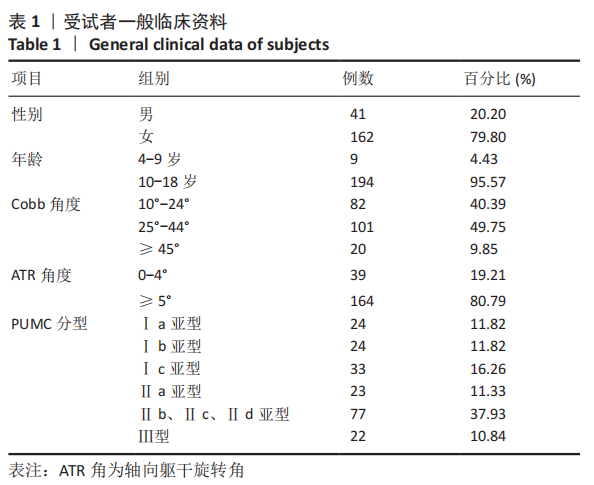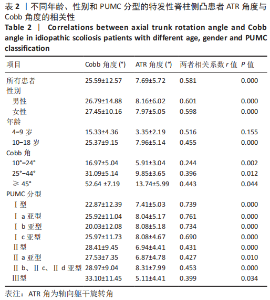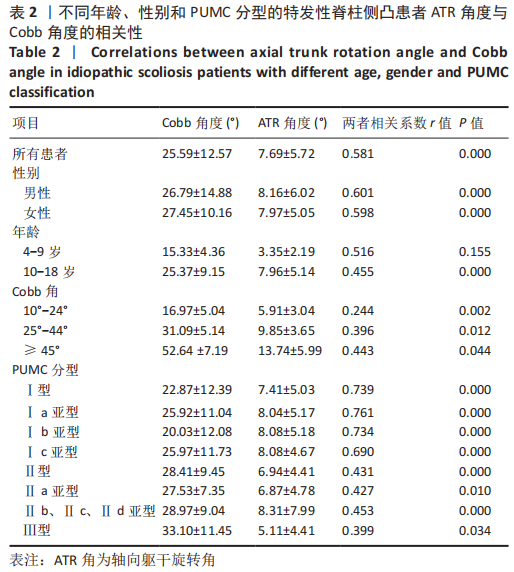[1] KANE WJ. Scoliosis prevalence: a call for a statement of terms. Clin Orthop Relat Res. 1977;(126):43-46.
[2] KAHANOVITZ N, SNOW B, PINTER I. The comparative results of psychologic testing in scoliosis patients treated with electrical stimulation or bracing. Spine. 1984;(9):442-444.
[3] PAYNE III WK, OGILVIE JW, RESNICK MD, et al. Doesscoliosis have a psychological impact and does gender make a difference? Spine. 1997; (22):1380-1381.
[4] UPASANI VV, CALTOUM C, PETCHARAPORN M, et al. Adolescent idiopathic scoliosis patients report increased pain at five years compared with two years after surgical treatment. Spine. 2008;(33): 1107-1112.
[5] DANIELSSON AJ, NACHEMSON AL. Back pain and function 22 years after bracetreatment for adolescent idiopathic scoliosis: a case–control study-part I.Spine. 2003;(28):2078-2085.
[6] DANIELSSON AJ, NACHEMSON AL. Back pain and function 23 years after fusion for adolescent idiopathic scoliosis: a case–control study-part II. Spine. 2003;(28):E373-383.
[7] SATO T, HIRANO T, ITO T, et al. Back pain in adolescents with idiopathic scoliosis: epidemiological study for 43,630 pupils in Niigata City, Japan. Eur Spine J. 2011;(20):274-279.
[8] COELHO DM, BONAGAMBA GH, OLIVEIRA AS. Scoliometer measurements of patients with idiopathic scoliosis. Braz J Phys Ther. 2013;17(2):179-184.
[9] YILMAZ H, ZATERI C, OZKAN AK, et al. Prevalence of adolescent idiopathic scoliosis in Turkey: an epidemiological study. Spine J. 2020; 20(6):947-955.
[10] ZHUANG Q, QIU G, LI Q,et al. Modified PUMC classification for adolescent idiopathic scoliosis. Spine J. 2019;19(9):1518-1528.
[11] ASHER MA, BURTON DC. Adolescent idiopathic scoliosis: natural history and long term treatment effects. Scoliosis. 2006;(1):2-10.
[12] BUNNELL W. Selective screening for scoliosis. Clin Orthop Relat Res. 2005;(434):40-45.
[13] FONG DY, LEE CF, CHEUNG KM, et al. A meta-analysis of the clinical effectiveness of school scoliosis screening. Spine. 2010;35(10):1061-1071.
[14] FAZAL M, EDGAR M. Detection of adolescent idiopathic scoliosis. Acta Orthop Belg. 2006;(72):184-186.
[15] THILAGARATNAM S. School-based screening for scoliosis: is it cost-effective? Singapore Med J. 2007;48(11):1012-1017.
[16] DEURLOO JA, VERKERK PH.To screen or not to screen for adolescent idiopathic scoliosis? A review of the literature. Public Health. 2015; 129(9):1267-1272.
[17] SAPKAS G, PAPAGELOPOULOS PJ, KATEROS K, et al. Prediction of Cobb angle in idiopathic adolescent scoliosis. Clin Orthop Relat Res. 2003;(411):32-39.
[18] SAPKAS G, PAPAGELOPOULOS PJ, KATEROS K, et al. Prediction of Cobb Angle in Idiopathic Adolescent Scoliosis. Clin Orthop Relat Res. 2003;(477):32-37.
[19] NEGRINI S, DONZELLI S, AULISA AG, et al. 2016 SOSORT guidelines: orthopaedic and rehabilitation treatment of idiopathic scoliosis during growth. Scoliosis Spinal Disord. 2018;13:3.
[20] ANDERSON SM. Spinal curves and scoliosis. Radiol Technol. 2007;79(1): 44-65.
[21] STIRLING AJ, HOWEL D, MILLNER PA, et al. Late-onset idiopathic scoliosis in children six to fourteen years old. A cross-sectional prevalence study. J Bone Joint Surg Am. 1996;(78):1330-1338.
[22] YANG JL, ZHANG K, FAN HW, et al. Development and validation of deep learning algorithms for scoliosis screening using back images. Commun Biol. 2019;2:390.
|



